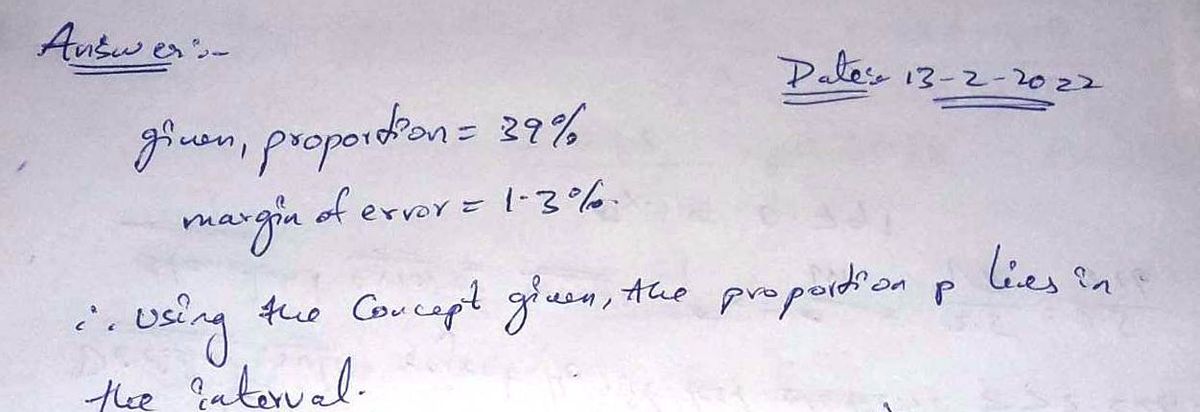In politics, marketing, etc. we often want to estimate a percentage or proportion p. One calculation in statistical polling is the margin of error - the largest (reasonble) error that the poll could have. For example, a poll result of 72% with a margin of error of 4% indicates that p is most likely to be between 68% and 76% (72% minus 4% to 72% plus 4%). In a (made-up) poll, the proportion of people who like dark chocolate more than milk chocolate was 39% with a margin of error of 1.3%. Describe the conclusion about p using an absolute value inequality. The answer field below uses the symbolic entry option in Mobius. That lets you type in a vertical bar | to represent absolute values. Also, when you type in < and then =, the symbolic entry option will automatically convert that to ≤ . In the same way, if you type in > and then =, the symbolic entry option will automatically convert that to ≥. Be sure to use decimal numbers in your answer (such as using 0.40 for 40%).
In politics, marketing, etc. we often want to estimate a percentage or proportion p. One calculation in statistical polling is the margin of error - the largest (reasonble) error that the poll could have. For example, a poll result of 72% with a margin of error of 4% indicates that p is most likely to be between 68% and 76% (72% minus 4% to 72% plus 4%).
In a (made-up) poll, the proportion of people who like dark chocolate more than milk chocolate was 39% with a margin of error of 1.3%. Describe the conclusion about p using an absolute value inequality.
The answer field below uses the symbolic entry option in Mobius. That lets you type in a vertical bar | to represent absolute values. Also, when you type in < and then =, the symbolic entry option will automatically convert that to ≤ . In the same way, if you type in > and then =, the symbolic entry option will automatically convert that to ≥.
Be sure to use decimal numbers in your answer (such as using 0.40 for 40%).

Trending now
This is a popular solution!
Step by step
Solved in 2 steps with 2 images









